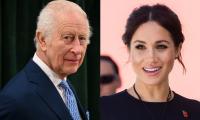Unless some rearguard actions are taken, the economy is all set to face a deepening recession. Consider the following facts which point to unmistakable signs of an evolving recession:
First, the production/sales data on key industries is showing significant declining trends. Automobile sales were down by as much as 40 percent; cement sales were down by 5.6 percent. Consumption of petroleum products in the first eight months of the calendar year were down by 15 percent. The large-scale manufacturing (LSM) data for the month of July shows a 3.3 percent decline in production.
Second, rather than declaring it as a success, the two months PBS data on trade balance should be cause for great alarm: exports were up a paltry 2 percent whereas imports were down by 21 percent. These numbers become more concerning when it is realized that exports had a very low base and imports had an unusually high base.
Third, the most worrying information is revealed when we look at which of the imports are most affected: petroleum products were down by 27 percent; iron and steel were down by 34 percent; textile imports (mostly for use in exports) were down by 29 percent (with raw cotton down by 39 percent); and, automobiles were down by 84 percent (CBU) and 41 percent (CKD). All these imports are either for industrial raw materials or the basic ingredients for running the wheels of the economy. Curiously, food group imports were also down by 27 percent, with milk powder and palm oil (the main imports in the group) down by 41 percent and 30 percent respectively. Not only is production affected because of rising costs, the key consumption items have been hit too for lack of demand due to higher prices.
Fourth, despite the massive decline in the current account deficit, the process of reserves build-up is lagging behind. An amount of $1.5 billion has been borrowed during the year but there is no corresponding increase in the reserves, which stood at $8465 million as on 20-9-2019 compared to $7735 million as on 30-6-2019, showing an increase of $735 million only. Additionally, remittances are down by as much as 8 percent, an event that has not happened in the recent past. Moreover, the foreign investment was down by 60 percent.
Fifth, a 15 percent growth in tax revenues during Jul-Aug is woefully insufficient to meet the revenue target for the year. Even on a quarterly basis, it falls significantly short of the 29 percent required growth. This should not be a surprising outcome, not just because the budget targets were unrealistic, but because growth assumptions are nowhere to be seen on the ground. With the production and imports data detailed above, it is unwise to expect a receding economy to throw higher tax receipts.
This recession is serious. It is the result of policies pursued in the last 14 months. Even before the Fund programme was put in place, unprecedented adjustments in exchange rate and interest rates were effected. A 24 percent devaluation and near doubling of the interest rate were too steep to allow a soft landing. Consequently, growth nose-dived to 3.3 percent (which is still over-estimated as the subsequent data after April 2019 suggests) from 5.5 percent a year earlier; LSM contracted by 3.3 percent and agriculture was also down as far as major crops were concerned.
Inflation shot-up to 7.34 percent from 3.92 percent. Credit to the private sector slowed from 775 billion to Rs.693 billion. The monetary growth of 11.26 percent was entirely due to government borrowings, which were moderated by a major contraction in net foreign assets (loss of reserves). The balance of payments improved from 6.4 percent of GDP to 4.3 percent. However, because of unfavourable terms of trade, the value of imports did not fall commensurate with significant declines in quantities. Yet, no lid was put on expenditures in the face of massive shortfalls in both tax and non-tax revenues and higher interest costs due to unprecedented increase in the interest rate. Consequently, the fiscal deficit reached a staggering level of 8.9 percent of GDP.
In summary, last year, barring the fiscal side, the overheated economy had cooled down as much as needed. But with the IMF programme another round of demand compression is underway. After the full picture of 2018-19 was out, it was evident that the Program was based on faulty assumptions, especially on the fiscal outcomes. The tax target of Rs5550 billion implies 45 percent growth over a base of Rs3830 billion, which, in hindsight, looks ludicrous.
The country had never had more than 21 percent annual increase in revenues. Targeted fiscal adjustment, consequently, would be impossible: Rather than 1.6 percent of GDP, a reduction of 2.9 percent is required to achieve primary deficit of 0.6 percent.
The other assumption was inflation at 13 percent, the lynchpin of the current monetary policy. This assumption is no less costly to economic performance than the unrealistic tax collection target. The SBP, in the name of setting a policy rate on the basis of forward-looking inflation forecast, has raised the rate to 13.25 percent, of which 250 bps have been added after the Fund programme. This rate makes no sense when average inflation for two months is 9.5 percent and on moving average basis, it is 7.5 percent. It is leading to massive transfer of resources from public sector to private bankers.
With the focus on primary deficit, no amount of interest payments, estimated to be nearly Rs3 trillion, would be of concern to the Fund, yet it would ruin the economy. The money market is trading at rates significantly below the policy rate and cut-off rates in auctions, clearly signalling overshooting of the policy rate. Credit to the private sector is down by Rs116 billion during the July 1 toSeptember 13 period.
In this backdrop, we are of the firm opinion that the government has over-reached in its efforts to contain the aggregate demand. This year, growth will be modest, insufficient to absorb new entrants in the job market or result in higher per capita income. There are reports of business closures and layoffs. In such periods, rise in poverty is inevitable. An economic revival programme has to be put in place as an adjunct to the IMF programme.
The leading charge has to come from a monetary policy with at least a 2.5 percent reduction in the interest rate. In its absence, there is no hope of an economic turnaround.
The writer is a former finance secretary.
Email: waqarmkn@gmail.com
People of that time believed that an eclipse was a symbol of displeasure of gods
Debt-to-GDP ratio, which stood at 51% in 2009-10, peaked at 74% in 2019-20 and remains alarmingly high at 65% in 2023-24
Point is not to pour cold water over government’s achievements, but to look at baseline metrics
Loss of biodiversity is stark reminder that urban mismanagement is not just infrastructural failure but ecological...
Strong public warning systems can also help ensure quick evacuations in places prone to fires
PPPs in Pakistan's WASH sector face significant regulatory and policy challenges that hinder their effectiveness







